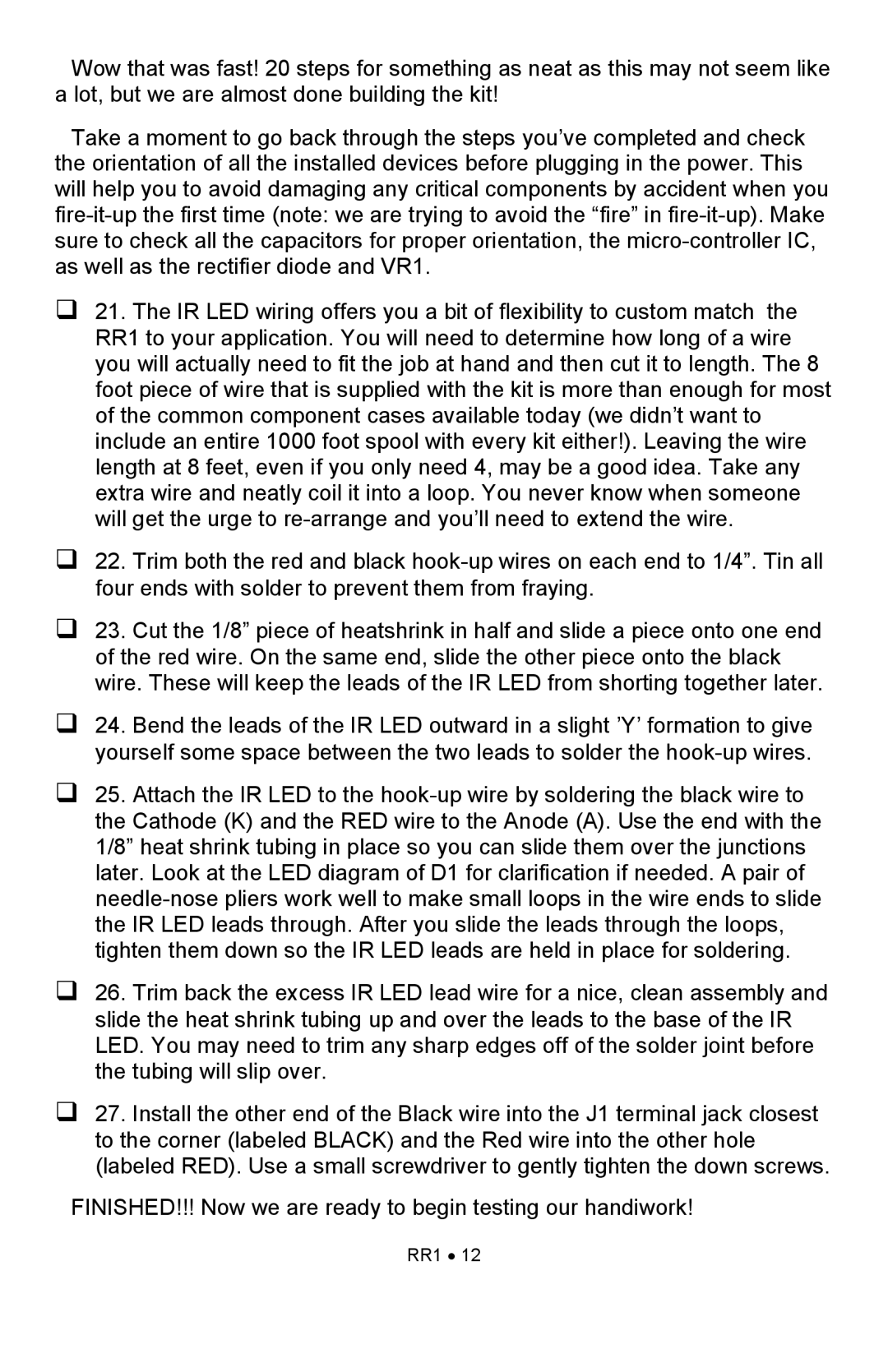Wow that was fast! 20 steps for something as neat as this may not seem like a lot, but we are almost done building the kit!
Take a moment to go back through the steps you’ve completed and check the orientation of all the installed devices before plugging in the power. This will help you to avoid damaging any critical components by accident when you
21. The IR LED wiring offers you a bit of flexibility to custom match the RR1 to your application. You will need to determine how long of a wire you will actually need to fit the job at hand and then cut it to length. The 8 foot piece of wire that is supplied with the kit is more than enough for most of the common component cases available today (we didn’t want to include an entire 1000 foot spool with every kit either!). Leaving the wire length at 8 feet, even if you only need 4, may be a good idea. Take any extra wire and neatly coil it into a loop. You never know when someone will get the urge to
22. Trim both the red and black
23. Cut the 1/8” piece of heatshrink in half and slide a piece onto one end of the red wire. On the same end, slide the other piece onto the black wire. These will keep the leads of the IR LED from shorting together later.
24. Bend the leads of the IR LED outward in a slight ’Y’ formation to give yourself some space between the two leads to solder the
25. Attach the IR LED to the
26. Trim back the excess IR LED lead wire for a nice, clean assembly and slide the heat shrink tubing up and over the leads to the base of the IR LED. You may need to trim any sharp edges off of the solder joint before the tubing will slip over.
27. Install the other end of the Black wire into the J1 terminal jack closest to the corner (labeled BLACK) and the Red wire into the other hole (labeled RED). Use a small screwdriver to gently tighten the down screws.
FINISHED!!! Now we are ready to begin testing our handiwork!
